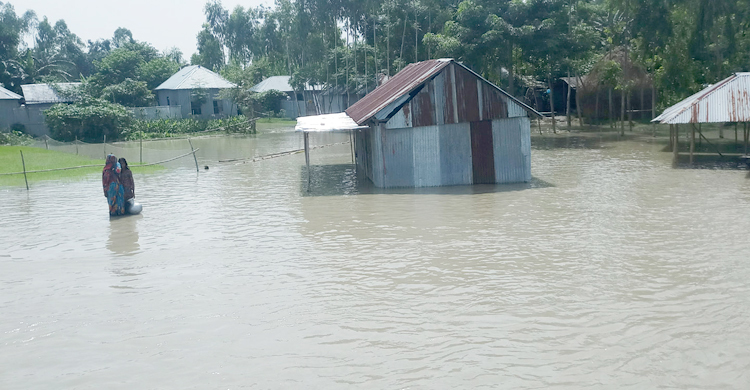Floods hit 3m in 21 districts

More than 3 million people have been affected by floods for 10 days in 21 districts of Bangladesh due to torrential rain and onrush of water from the upstream.
The most affected districts include Kurigram, Jamalpur, Sylhet, Gaibandha, Sunamganj, Chattogram and Cox’s Bazar while the situation is improving in some other regions with the drop in rainfall.
Water, however, was still flowing above the danger level at 23 of the 93 points being observed by the Flood Forecasting and Warning Centre of the Water Development Board on Wednesday.
The centre’s Executive Engineer Md Arifuzzaman Bhuiyan said water of the Brahmaputra, Jamuna and Padma rivers is likely to rise in the next two days due to surge from the upstream though heavy rainfall is not in the forecast.
The situation in Kurigram, Jamalpur, Gaibandha, Bogura, Sirajganj, Tangail, Manikganj and Faridpur will worsen in that case.
According to the disaster management and relief ministry, over 3 million people have been affected after flooding started about two weeks ago.
Kurigram is the most stricken district with 600,000 people marooned by floods while Chattogram was the second with over half a million people stranded in submerged areas. The number is about 350,000 in Sylhet, 300,000 in Gaibandha and 200,000 in Jamalpur.
Flooding has triggered river erosion, breached dams, snapped road and rail links, inundated crop fields and forced educational institutions shut.
Over a dozen people, mostly children, have drowned as flash floods washed away homes or boats capsized.
Now the fear of spread of communicable diseases in the affected areas has increased with the Met Office, saying a mild heat wave sweeping over the regions of Faridpur, Rajshahi, Mongla, Satkhira, Chuadanga and Jashore may continue.
Bangladesh experienced the deadliest floods in decades in 2017, when the untimely rise in water levels affected about 10 million people and damaged crops on swathes of fields in the Haor or backswamp regions.
The death toll from drowning and other flood-related reasons reached 140 that year, though the spread of the floods were lesser than those of 1988 and 1998.
